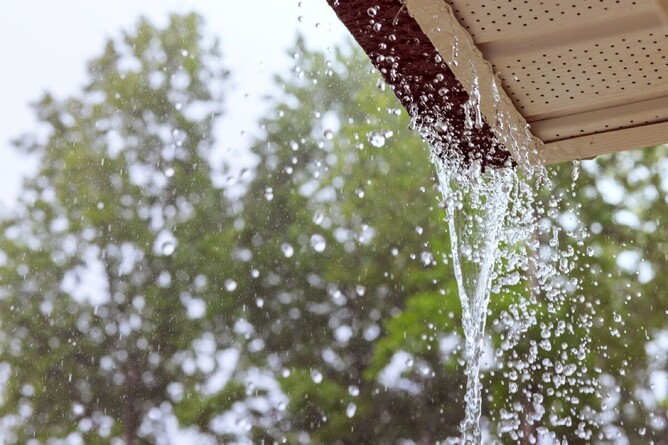Spouting is one of those things homeowners don’t think about—until there’s a problem. A good spouting set-up isn’t just about keeping rain off the deck; it protects your home from serious water damage, soil erosion, and structural headaches.
Kerikeri’s coastal and subtropical climate throws plenty of challenges at home exteriors. Heavy rain, salty air, high humidity—it all takes a toll. That’s why having the right spouting system, installed properly, and maintained regularly is a non-negotiable for keeping your home in top shape.
At Flood Roofing, we’ve spent years working with Kerikeri homeowners to install, repair, and maintain spouting that stands up to the local conditions. This guide covers everything you need to know to pick the right system, avoid costly mistakes, and keep your home protected for years to come.
Key Factors When Choosing Spouting in Kerikeri
Material Matters: Which Spouting Works Best?
Not all spouting is created equal, and choosing the right material can mean the difference between a hassle-free system and constant repairs.
Aluminium: Light, tough, and won’t rust—great for longevity and minimal maintenance.
Colorsteel®: Designed for NZ conditions, offering strength and corrosion resistance.
PVC: Affordable and resistant to rust, but not always built for the long haul in extreme weather.
Copper: A premium option with serious durability, but the price tag isn’t for everyone.
Zincalume®: A strong choice for coastal homes, with excellent corrosion resistance.
Flood Roofing works with all major spouting materials and can recommend the best fit based on your home’s location, budget, and long-term goals.
Sizing and Capacity: Getting It Right for Heavy Rainfall
Kerikeri sees a lot of rain. A standard spouting set-up might not cut it, especially in high-rainfall areas where water needs to drain fast.
Larger-capacity spouting prevents overflow and reduces the risk of leaks.
Seamless spouting cuts down on weak points where leaks tend to start.
Box vs half-round designs: Choosing the right profile based on rainfall intensity and home design.
Strategic downpipe placement ensures proper drainage and avoids pooling around the foundation.
Flood Roofing specialises in high-performance spouting set-ups designed to handle Kerikeri’s heaviest downpours without a hitch.
Spouting Styles & Aesthetics: Finding the Right Look
Spouting isn’t just functional—it plays a big role in your home’s curb appeal. The right system can blend seamlessly into your exterior while doing its job efficiently.
Traditional vs modern profiles: Some homes suit classic rounded spouting, while others benefit from a sleek, squared-off design.
Colour coordination: Matching Colorsteel® spouting with your roof and exterior for a clean, cohesive look.
Hidden vs exposed spouting: Weighing aesthetics against easy access for cleaning and maintenance.
Flood Roofing helps homeowners find spouting options that look great, perform well, and stand up to Kerikeri’s conditions.
Best Spouting Materials for Kerikeri’s Climate
Kerikeri’s mix of coastal air, heavy rain, and humidity means not all spouting materials are created equal. The wrong choice can lead to early corrosion, cracking, or constant blockages. Choosing the right material ensures long-term performance, lower maintenance, and a set-up that can handle the region’s weather.
Aluminium Spouting: Rust-resistant, lightweight, and ideal for coastal homes. It won’t corrode like traditional steel and handles Kerikeri’s salty air well.
Colorsteel® Spouting: A tough, long-lasting option that’s built for New Zealand conditions. It resists fading, rust, and damage, making it a top pick for durability.
PVC Spouting: Affordable and corrosion-proof, but may degrade under extreme heat and UV exposure over time. Works best for homes that don’t see constant salt spray.
Copper Spouting: A premium choice with an elegant look. It naturally resists corrosion and develops a protective patina over time, but the upfront cost is higher.
Which One is Best? For most Kerikeri homes, Colorsteel® or aluminium offer the best mix of durability, weather resistance, and long-term value. Flood Roofing installs high-quality spouting solutions designed to handle the region’s unique climate.
Spouting Size and Capacity: Does Bigger Mean Better?
Kerikeri gets its fair share of heavy rain, so spouting needs to be big enough to handle intense downpours without overflowing. A spouting system that’s too small can quickly become overwhelmed, leading to leaks, water damage, and flooding around the foundation.
Key Considerations for Spouting Size:
Rainfall Intensity: Kerikeri sees significant rainfall, so wider, deeper gutters help prevent overflow.
Roof Size & Slope: The larger and steeper the roof, the more water needs to be drained quickly.
Downpipe Placement: Properly positioned downpipes reduce strain on the spouting system and prevent pooling.
Larger spouting isn’t always better if the set-up isn’t designed correctly. Flood Roofing helps homeowners choose the right size and ensures a seamless installation that keeps homes protected in all weather conditions.
Signs It’s Time to Replace Your Spouting
Spouting isn’t built to last forever. Over time, exposure to the elements, wear and tear, and poor maintenance can lead to failures that cause serious damage to your home. Ignoring the warning signs could mean costly repairs down the line.
Common Red Flags That Indicate Spouting Issues
Frequent leaks or sagging sections that can’t be fixed with simple repairs.
Visible rust or corrosion on metal spouting, especially near joints.
Cracks or splits in PVC spouting that allow water to escape.
Mould or moss growth, which can indicate poor drainage and standing water.
Water pooling around the foundation, leading to potential structural damage.
If your spouting is more than 15 years old, or you’re constantly dealing with repairs, it may be time for a full replacement. Flood Roofing provides expert assessments and high-quality installations to keep homes safe and dry.
Maintenance Tips to Keep Your Spouting in Top Shape
Regular maintenance can extend the lifespan of your spouting and prevent expensive damage. In a place like Kerikeri, where the weather can change quickly, staying on top of upkeep is key.
How to Maintain Your Spouting Year-Round:
Clean gutters every 3–6 months, especially after storms. Leaves and debris can clog the system fast.
Flush downpipes with a garden hose to ensure proper water flow.
Check for leaks and weak spots, particularly after heavy rain.
Trim overhanging branches to prevent leaves and twigs from filling up the gutters.
Schedule a professional inspection to catch small issues before they turn into big problems.
Flood Roofing offers routine maintenance services, ensuring your spouting stays in peak condition and works as it should, no matter the season.
When DIY Spouting Repairs Aren’t Enough: Calling in the Experts
DIY fixes can handle minor spouting issues, but some problems need professional attention. Patch jobs and temporary solutions might seem like a quick win, but they often fail when the next big downpour hits.
Signs DIY Repairs Won’t Cut It:
Spouting is pulling away from the house, sagging, or missing sections
Recurring leaks, even after sealing or patching
Downpipes struggling to drain properly, leading to pooling water
Rust, cracks, or brittle plastic that breaks under pressure
Foundation or siding damage from overflowing water
Ignoring these signs can lead to serious structural problems, so it’s best to bring in a professional before small issues turn into major headaches. Flood Roofing’s team knows Kerikeri’s conditions inside and out, ensuring repairs and replacements are built to last.
Why Professional Spouting Installation Matters
Getting spouting installed properly is about more than just keeping rainwater away from your house. Poor installation can lead to water damage, expensive repairs, and frustration every time there’s heavy rain.
What a Professional Installation Gets Right:
Custom-fitted spouting designed for the home’s size, roof pitch, and drainage needs
Proper alignment and slope to direct water efficiently into downpipes
High-quality brackets and secure fixings to handle Kerikeri’s high winds and storms
Seamless joins and sealed connections to prevent leaks and corrosion
Expert advice on materials and designs that work best for the local climate
Flood Roofing provides expert spouting installation for Kerikeri homes, ensuring water drains safely and efficiently year-round. Whether it’s a new build or an upgrade, quality installation makes all the difference.



